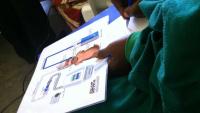Kenya

GOALS
-
Introduce and proliferate CPAP into medical facilities that have large disease burdens from acute respiratory distress in the neonatal and pediatric population.
-
Implement and maintain health professional training in the use of CPAP by training instructors.
-
Assist in the development of standards of practice for CPAP in Kenya and integrate CPAP training into the national medical and paramedical education system.
PROGRAM OVERVIEW
-
Program sites: The program started with four hospitals in Kenya (Kisumu County Referral Hospital, Siaya County Referral Hospital, Kisii Teaching and Referral Hospital and Pumwani Maternity Hospital to allow for adaptation of the material to fit local needs as indicated. The evaluation area included ten hospitals where clinicians who were trained as trainers of CPAP were working. This included neonatal and pediatric wards at eight Level 5 and two Level 6 hospitals:
-
Pumwani Maternity Hospital
-
Kisumu County Referral Hospital
-
Siaya County Referral Hospital
-
Homabay Country Referral Hospital
-
Kakamega Country Referral Hospital
-
Bungoma County Hospital
-
Busia County Hospital
-
Migori County Hospital
-
Kisii County Referral Hospital (level 6)
-
Jaramogi Oginga Odinga Teaching and referral Hospital (level 6)
Each hospital was provided two CPAP machines, 200 CPAP nasal prong interfaces, two pulse oximeters and a high acuity monitor for obtaining vital signs.
-
-
Training: The initial training was led by a United States pediatric intensive care physician and nurse. The five-day intensive training included two days of classroom learning and three days of bedside in-service training. Each instructor received a training kit and comprehensive training curriculum including: PowerPoint presentation, instructor manual, training mannequin, instructional video and bedside instructional tools. The training was then led by the Kenyan Paediatric Association, using a cohort of instructors trained by Columbia University.
-
Monitoring and Evaluation of program: Monitoring and evaluation was performed to ensure the program was effective and sustainable. At six-month intervals for 12 months, knowledge and skills evaluation were performed to measure training fidelity. Equipment durability was assessed, qualitative surveys were used to identify barriers to successful application and local healthcare providers documented CPAP usage.
-
Support & Sustainability: The Center for Public Health and Development provided logistical, technical and monitoring and evaluation support on the ground for the duration of the program. The Kenyan Paediatric Association oversaw the program and ensured CPAP proliferation by advocating for training, public and private investment and integration of CPAP into national health care policies and practices.